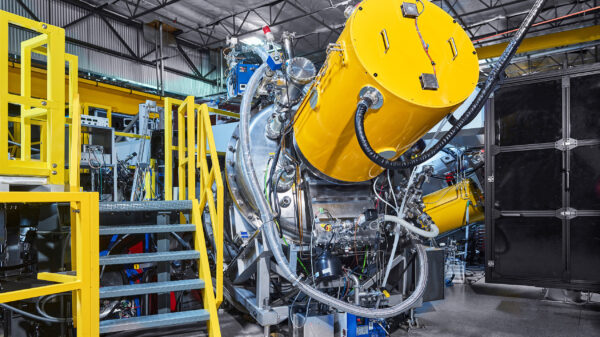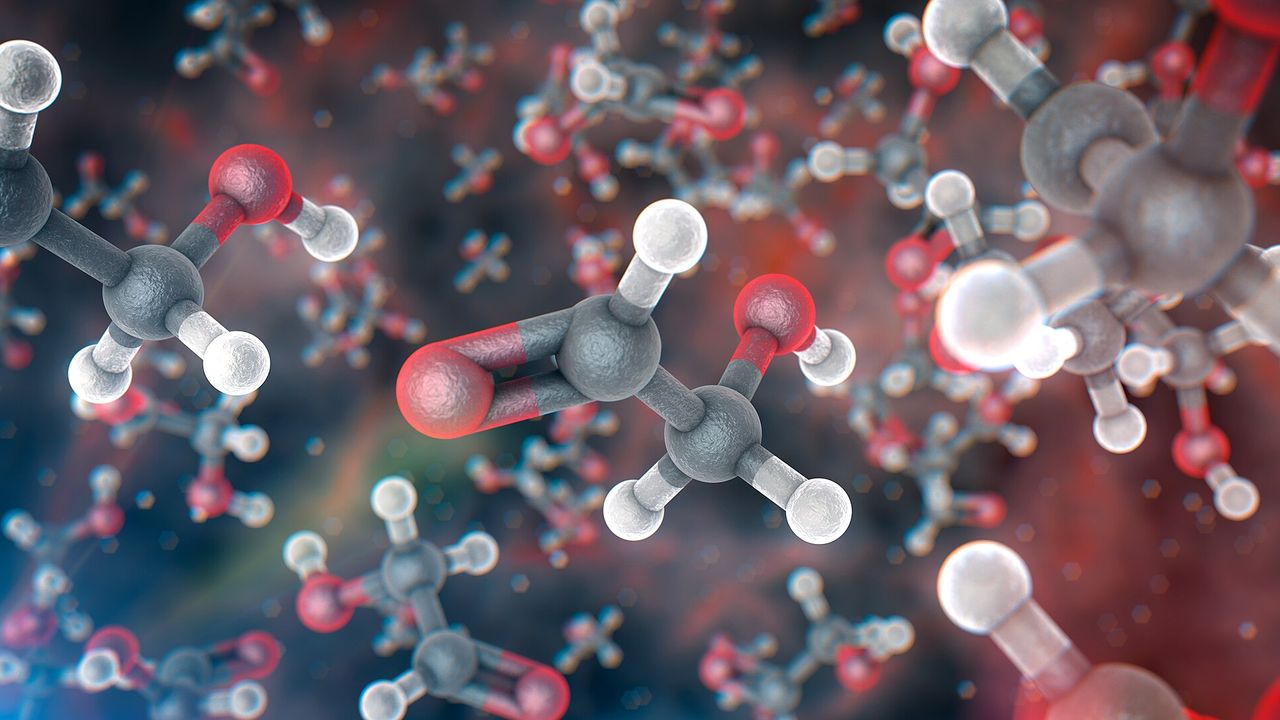New laboratory research suggests that some of the organic molecules detected in plumes from Saturn’s moon Enceladus may originate from space radiation rather than from the moon’s subsurface ocean. This finding complicates the understanding of the astrobiological significance of these compounds and raises questions about their origins.
Enceladus, known for its icy surface, conceals a global ocean beneath its crust. This liquid water is expelled into space from fissures near the moon’s south pole, forming plumes that contain tiny ice particles extending hundreds of kilometers. While much of this material falls back onto the surface, some remains in orbit, contributing to the formation of Saturn’s E ring, the planet’s largest and outermost ring. Between 2005 and 2015, NASA’s Cassini spacecraft conducted multiple flybys of these plumes, detecting various organic molecules that hinted at a potentially habitable environment beneath the ice.
To explore the origins of these organic molecules further, a research team led by Grace Richards, a postdoctoral researcher at the National Institute for Astrophysics in Rome, conducted experiments simulating conditions near Enceladus’s surface. They mixed water, carbon dioxide, methane, and ammonia—key components believed to comprise Enceladus’s surface ice—and cooled this mixture to −200°C in a vacuum chamber. They then bombarded it with water ions, simulating the radiation environment surrounding the moon.
The radiation triggered a series of chemical reactions, producing diverse molecules, including carbon monoxide, cyanate, ammonium, and various alcohols. Notably, molecular precursors to amino acids, such as formamide and acetaldehyde, were also generated. These findings imply that radiation could induce similar reactions on Enceladus, suggesting that some organic molecules might not originate from biological processes.
Richards shared her findings at the Europlanet Science Congress held in Helsinki, Finland, and detailed the results in the journal Planetary and Space Science. The study provokes further questions regarding whether the organic molecules found in Enceladus’s plumes stem from the buried ocean, are produced in space, or form near the surface after being expelled from the moon’s interior.
While this discovery does not rule out the possibility of a habitable ocean on Enceladus, Richards emphasizes the need for caution in linking the presence of these organic molecules to their origin or role in potential biochemistry. “I don’t necessarily think that my experiments discredit anything to do with Enceladus’s habitability,” she stated. However, she added, “when you’re trying to infer this ocean composition from what you’re seeing in space, it’s important to understand all the processes that go into modifying this material.”
The study also highlights the importance of understanding various processes beyond radiation that could influence the chemical makeup of the plumes. These include phase changes, interactions with the moon’s icy walls, and the effects of the surrounding space environment.
Alexis Bouquet, a researcher at the French National Centre for Scientific Research, who was not involved in the study, noted the significance of conducting laboratory simulations to inform future missions to Enceladus. “They demonstrated that you can produce a certain variety of species in conditions that are relevant to the south pole of Enceladus,” Bouquet explained. This research is particularly relevant given the upcoming missions to Jupiter’s icy moons, including NASA’s Europa Clipper and the European Space Agency’s JUICE (Jupiter Icy Moons Explorer), which will investigate moons with subsurface oceans, such as Ganymede and Callisto.
As researchers continue to explore the chemistry of Enceladus, another study led by Nozair Khawaja from Freie Universität Berlin and the University of Stuttgart revealed new types of organic molecules detected during Cassini’s close approach in 2008. These include ester and ether groups, as well as cyclic molecules containing double bonds of oxygen and nitrogen. Such molecules are crucial links in the series of reactions that lead to the formation of complex compounds necessary for life.
Khawaja’s analysis suggests that these complex organic molecules are found in newly expelled ice grains from the vents. During its closest flyby, Cassini approached within 28 kilometers of Enceladus’s surface. The short residence time of the ice grains in space, estimated at just “a few minutes,” raises questions about whether space radiation could have influenced their chemical composition. “Big grains coming from the surface full of organics? That is much harder to explain through radiation chemistry,” Bouquet stated.
Both studies underscore the complexity of Enceladus’s chemistry, reinforcing its status as a prime target in the search for extraterrestrial life or the building blocks of life. Enceladus is known to possess three essential prerequisites for life: liquid water, an energy source, and a rich array of chemical elements and molecules. Even if the subsurface ocean remains unreachable, the plumes provide the only known opportunity to sample an extraterrestrial liquid ocean.
Plans for a potential ESA mission dedicated to Enceladus are already in progress, which may include high-speed flybys of the plumes and possibly a lander on the south pole. Insights from these recent studies will inform the design of instrumentation and guide the interpretation of future results. “There is no better place to look for [life] than Enceladus,” Khawaja affirmed.






































































